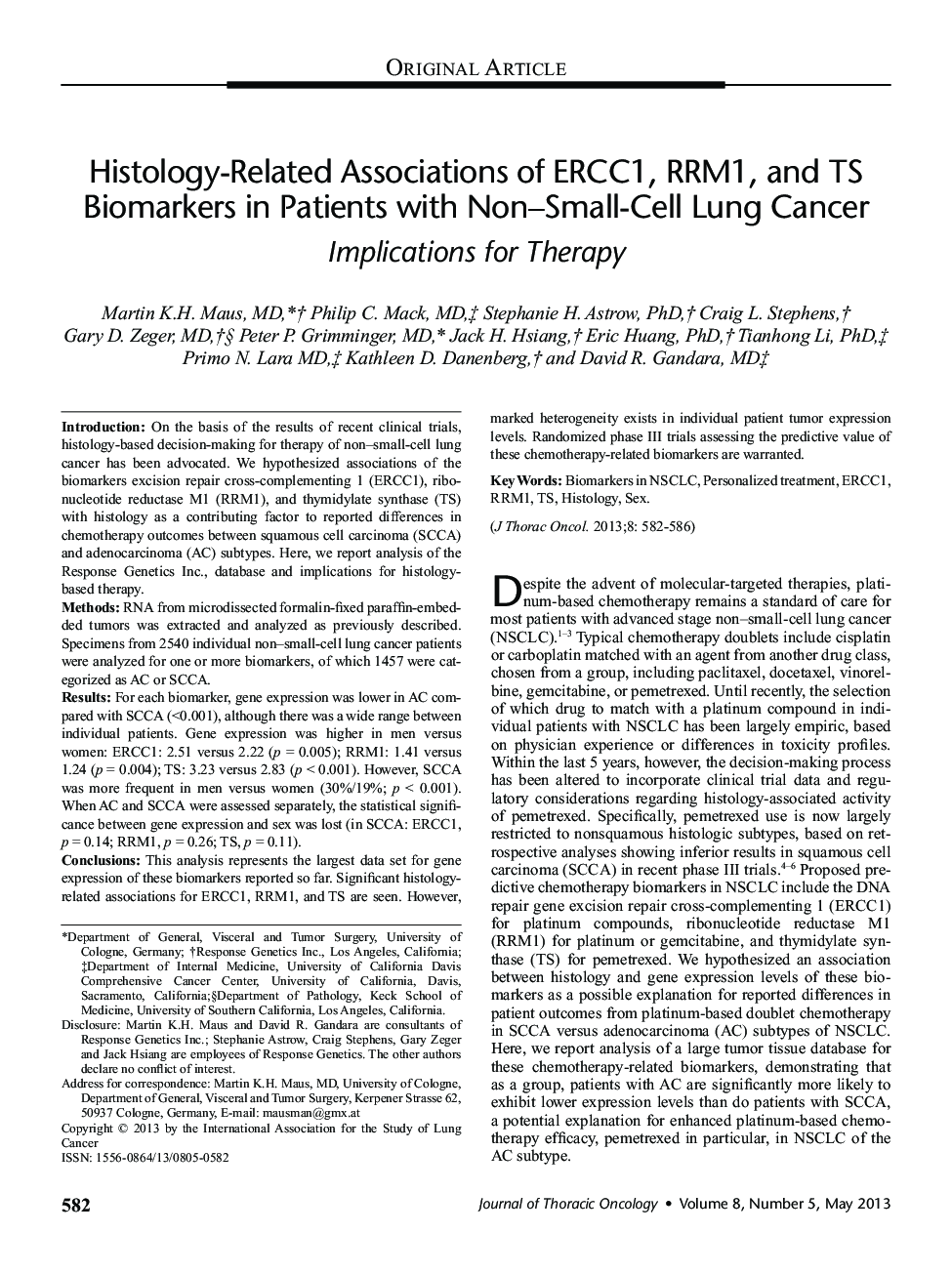| Article ID | Journal | Published Year | Pages | File Type |
|---|---|---|---|---|
| 3990268 | Journal of Thoracic Oncology | 2013 | 5 Pages |
IntroductionOn the basis of the results of recent clinical trials, histology-based decision-making for therapy of non–small-cell lung cancer has been advocated. We hypothesized associations of the biomarkers excision repair cross-complementing 1 (ERCC1), ribonucleotide reductase M1 (RRM1), and thymidylate synthase (TS) with histology as a contributing factor to reported differences in chemotherapy outcomes between squamous cell carcinoma (SCCA) and adenocarcinoma (AC) subtypes. Here, we report analysis of the Response Genetics Inc., database and implications for histology-based therapy.MethodsRNA from microdissected formalin-fixed paraffin-embedded tumors was extracted and analyzed as previously described. Specimens from 2540 individual non–small-cell lung cancer patients were analyzed for one or more biomarkers, of which 1457 were categorized as AC or SCCA.ResultsFor each biomarker, gene expression was lower in AC compared with SCCA (<0.001), although there was a wide range between individual patients. Gene expression was higher in men versus women: ERCC1: 2.51 versus 2.22 (p = 0.005); RRM1: 1.41 versus 1.24 (p = 0.004); TS: 3.23 versus 2.83 (p < 0.001). However, SCCA was more frequent in men versus women (30%/19%; p < 0.001). When AC and SCCA were assessed separately, the statistical significance between gene expression and sex was lost (in SCCA: ERCC1, p = 0.14; RRM1, p = 0.26; TS, p = 0.11).ConclusionsThis analysis represents the largest data set for gene expression of these biomarkers reported so far. Significant histology-related associations for ERCC1, RRM1, and TS are seen. However, marked heterogeneity exists in individual patient tumor expression levels. Randomized phase III trials assessing the predictive value of these chemotherapy-related biomarkers are warranted.
